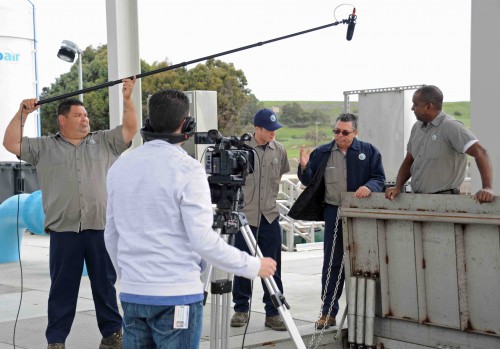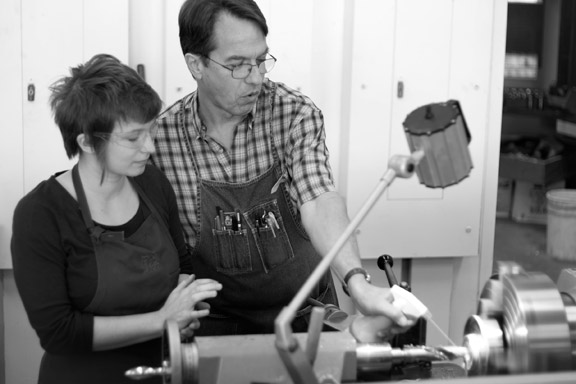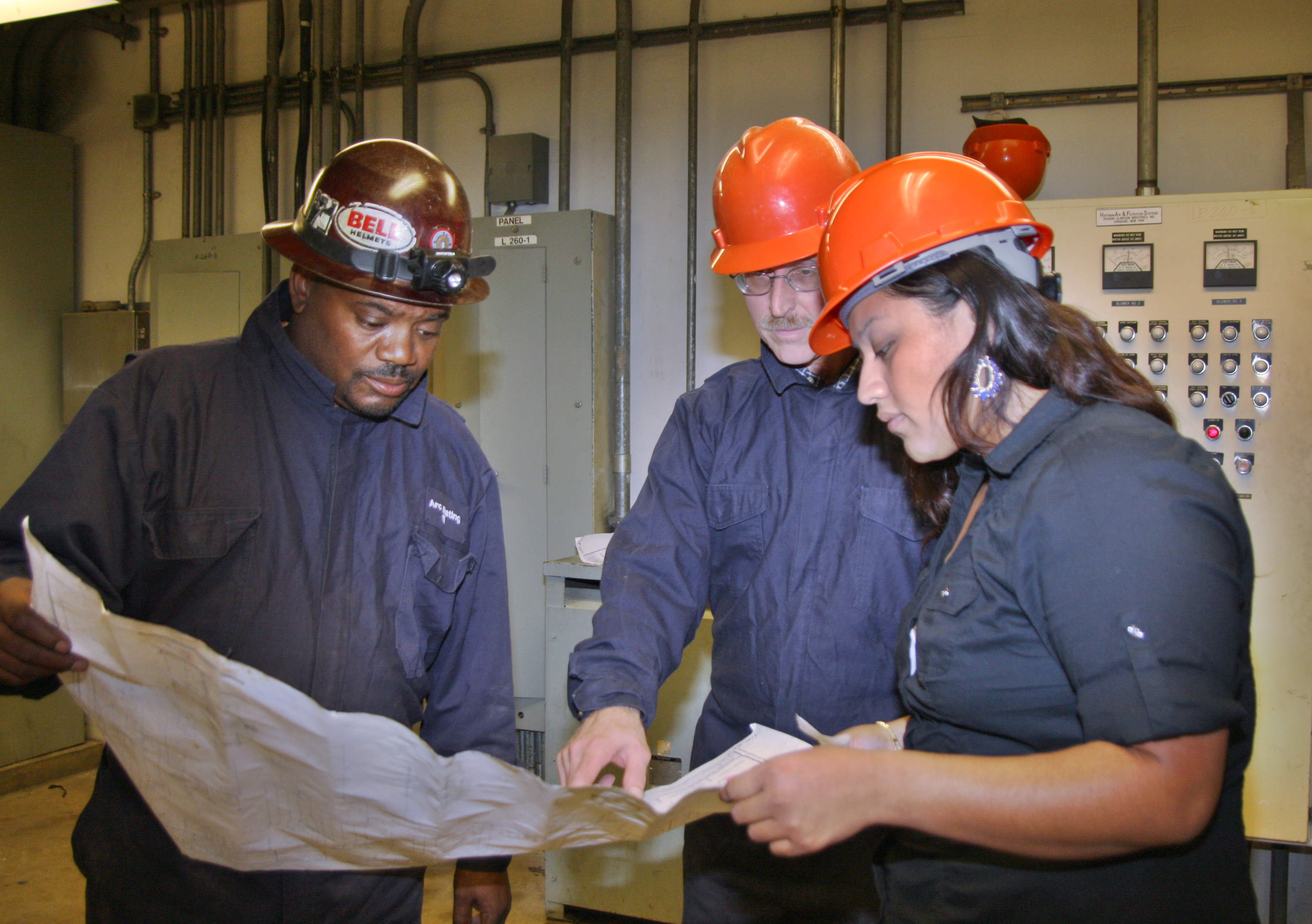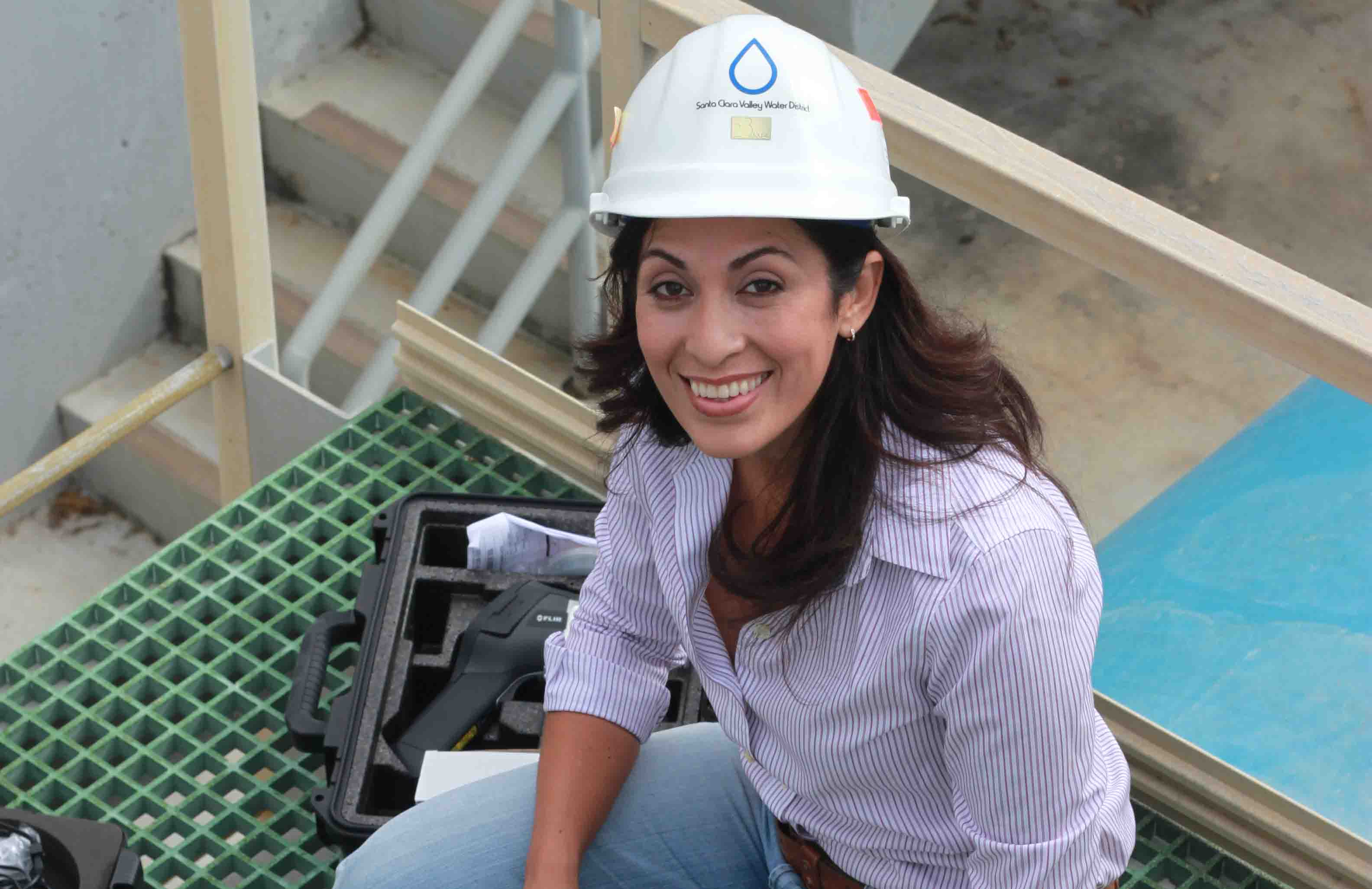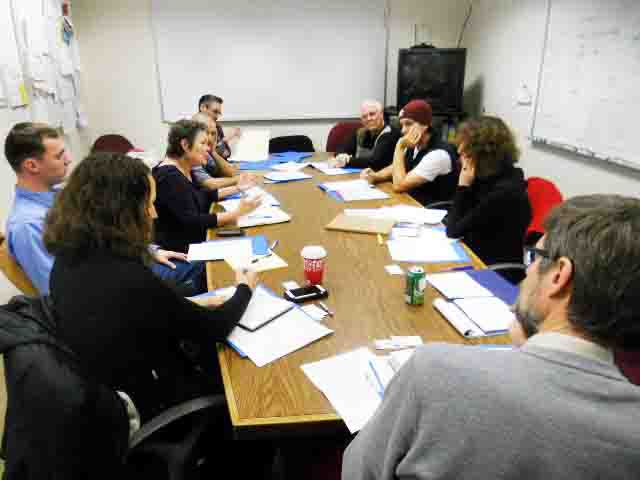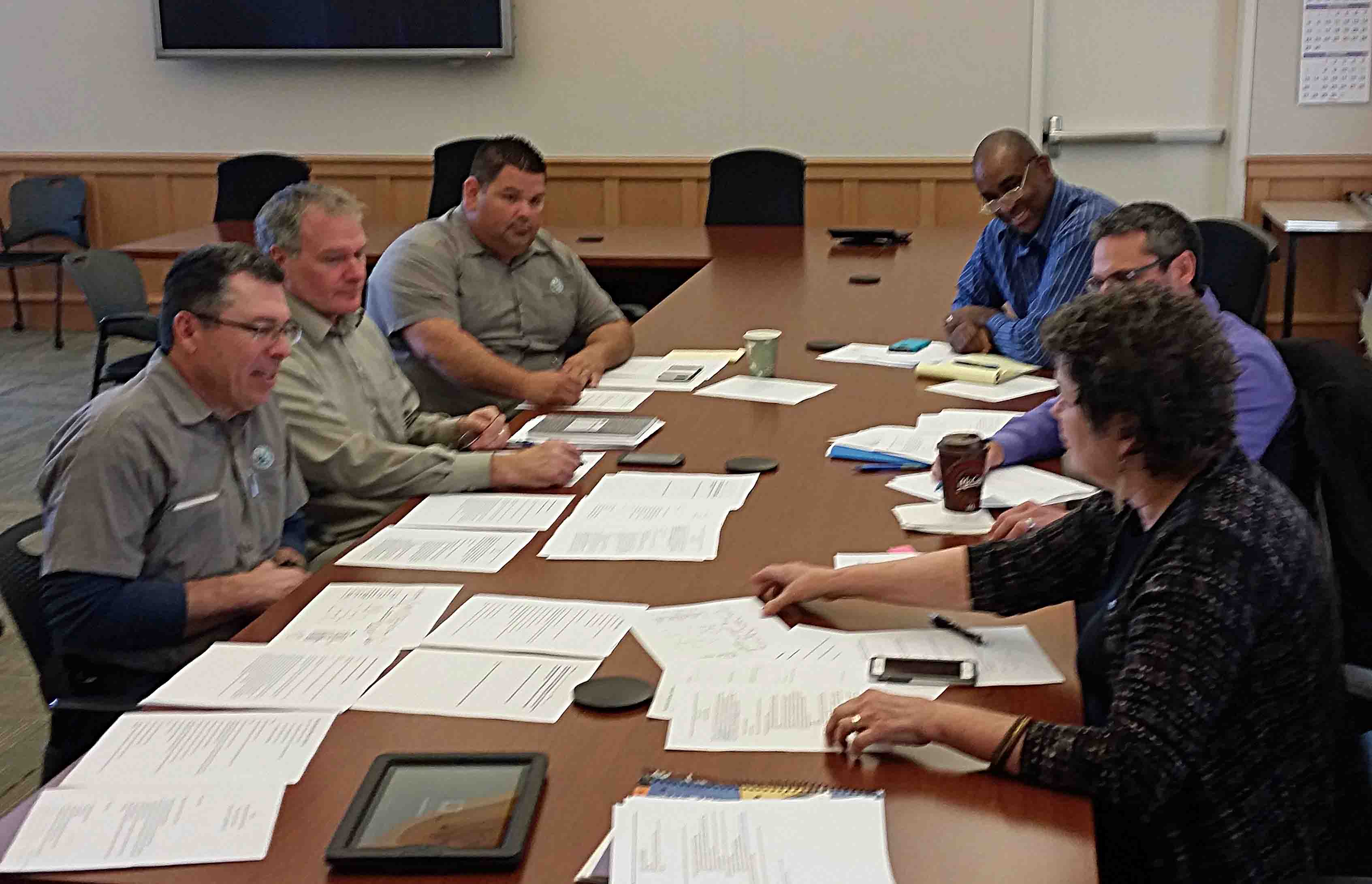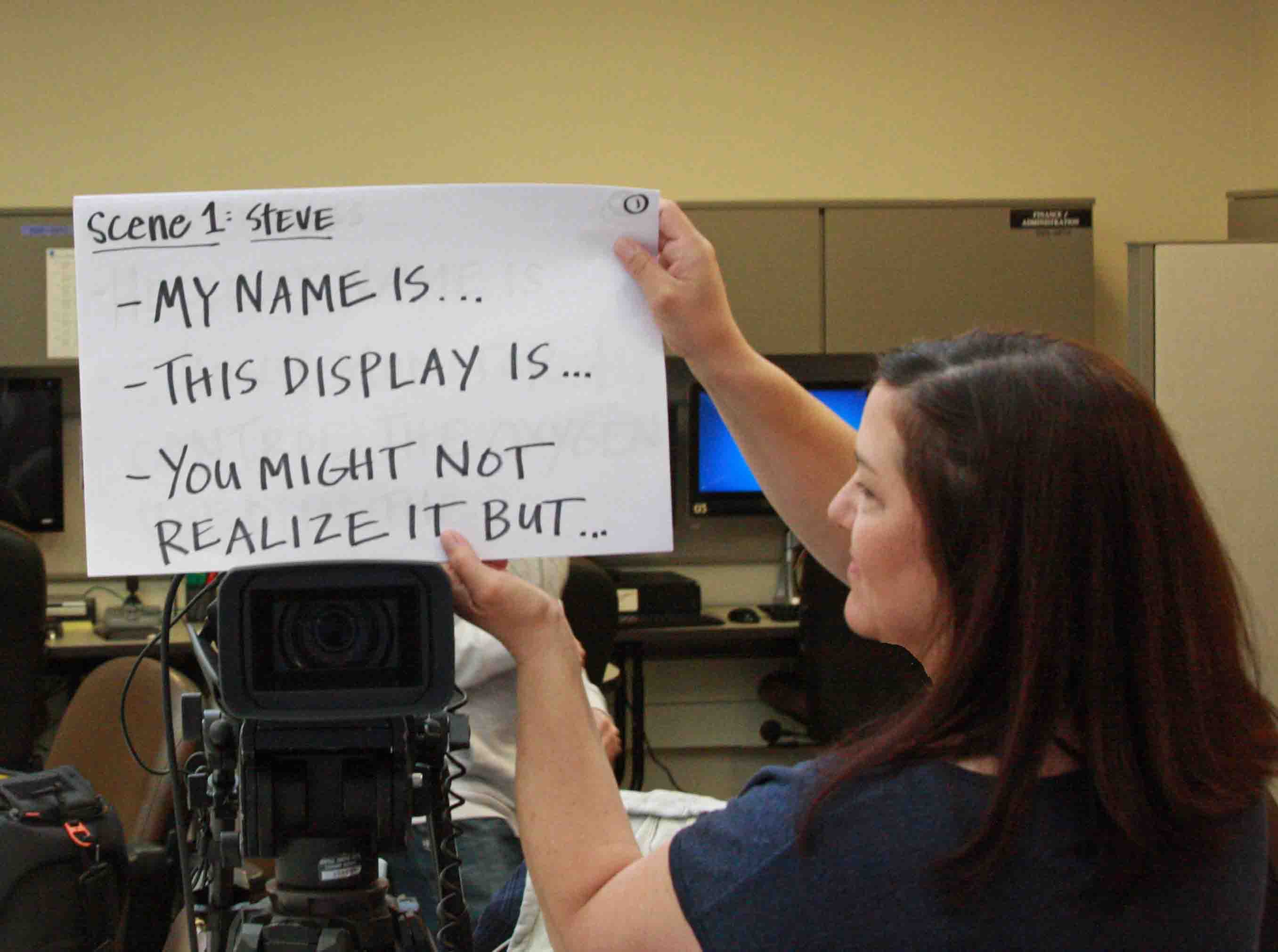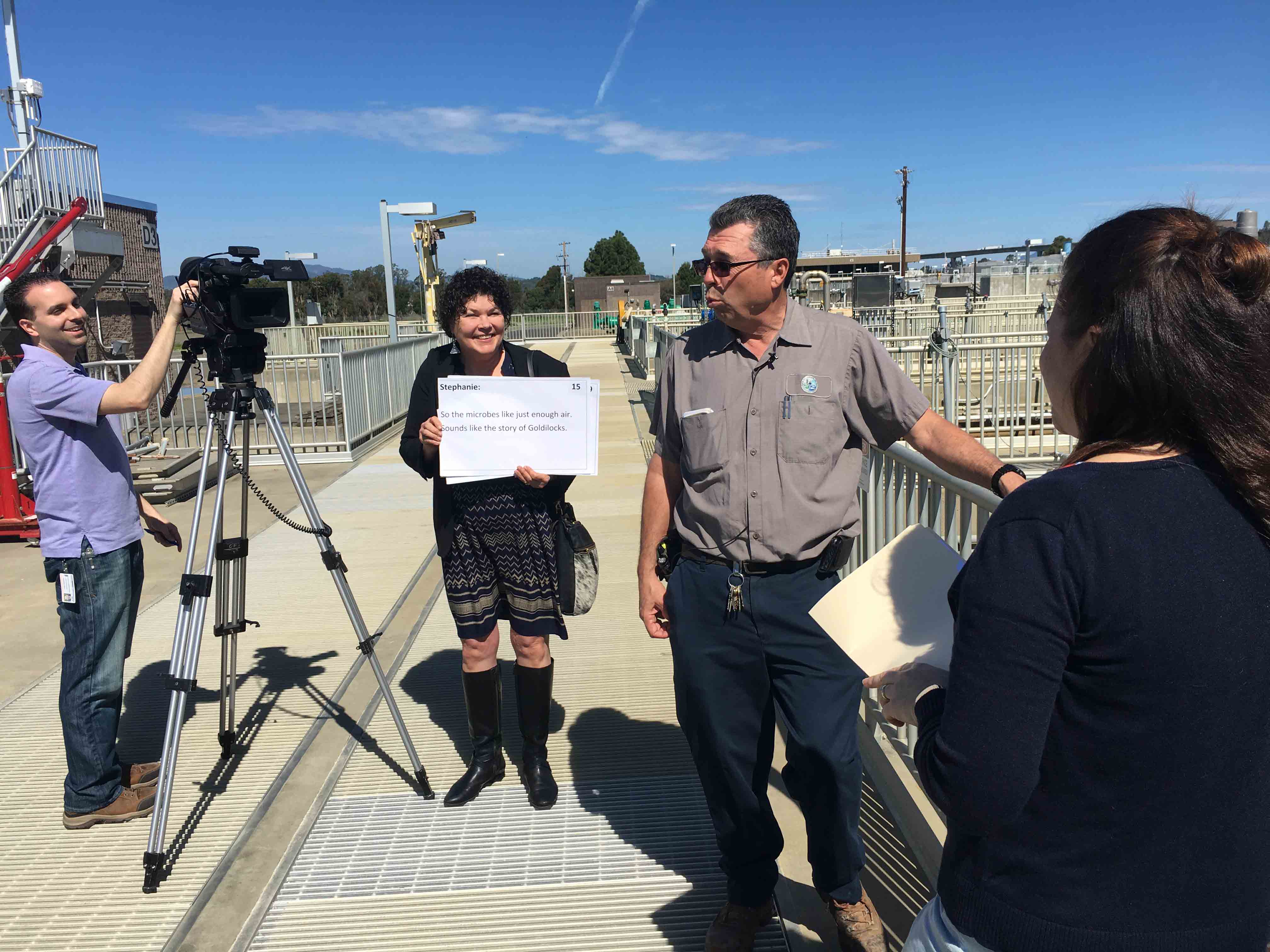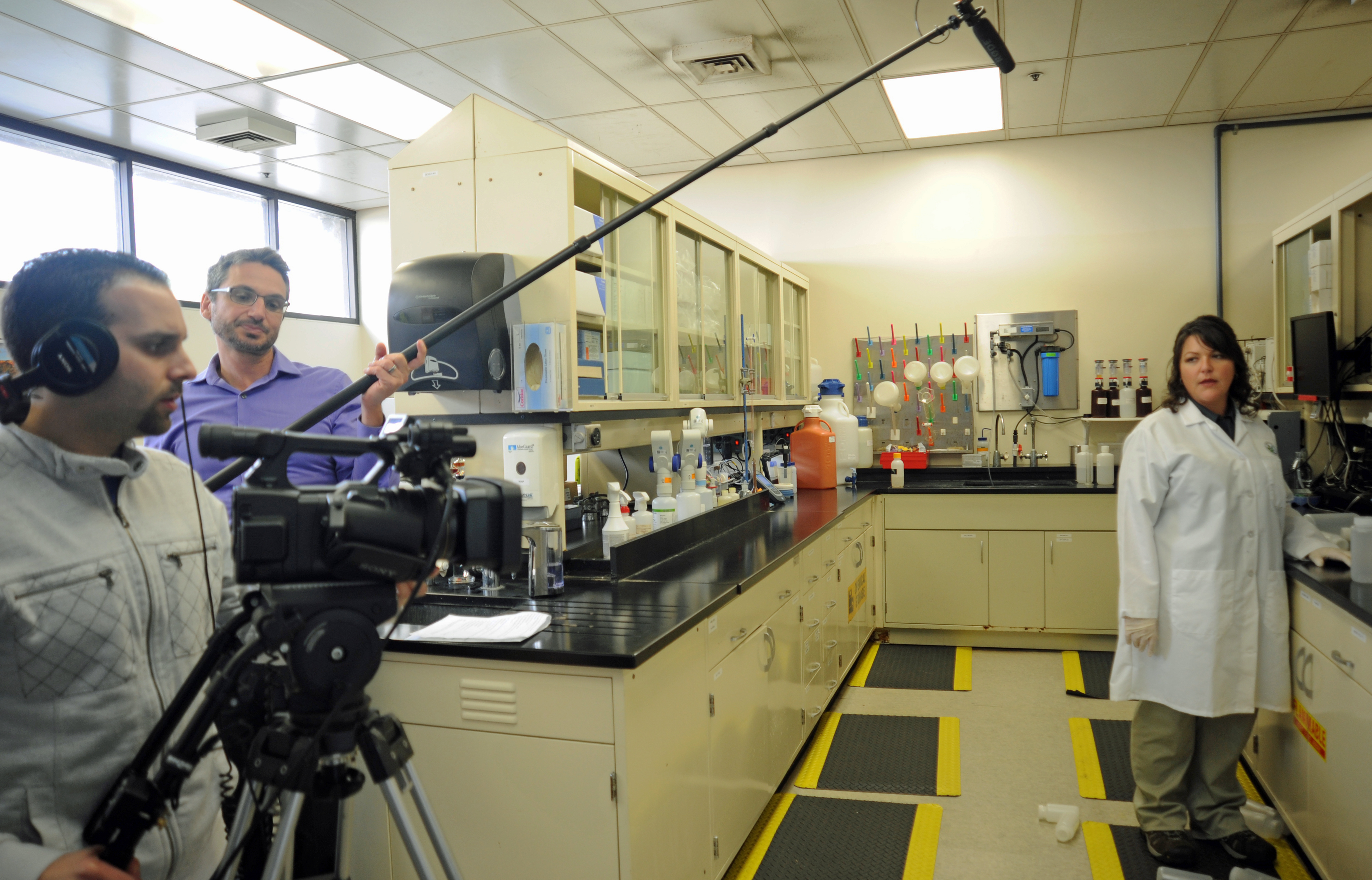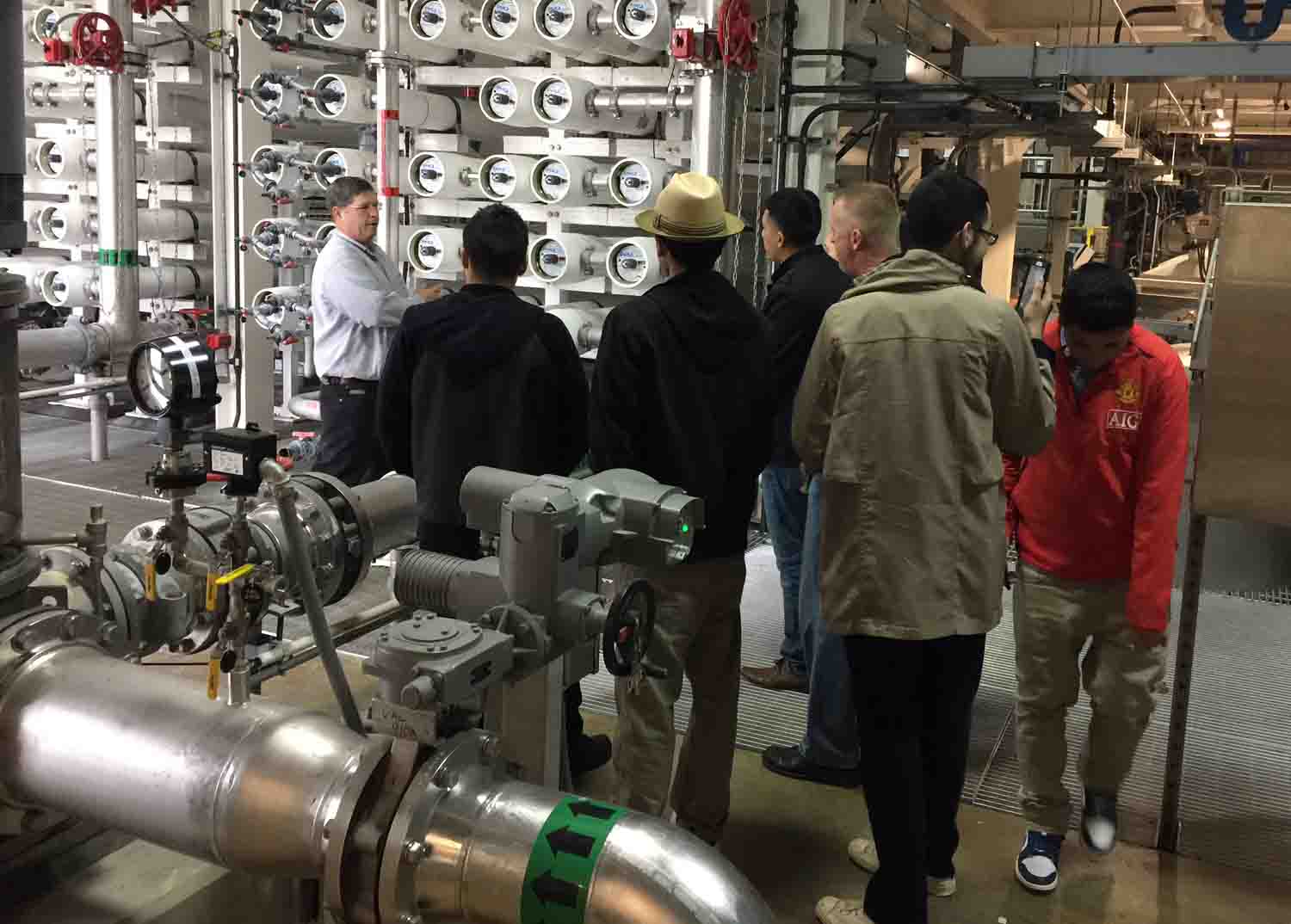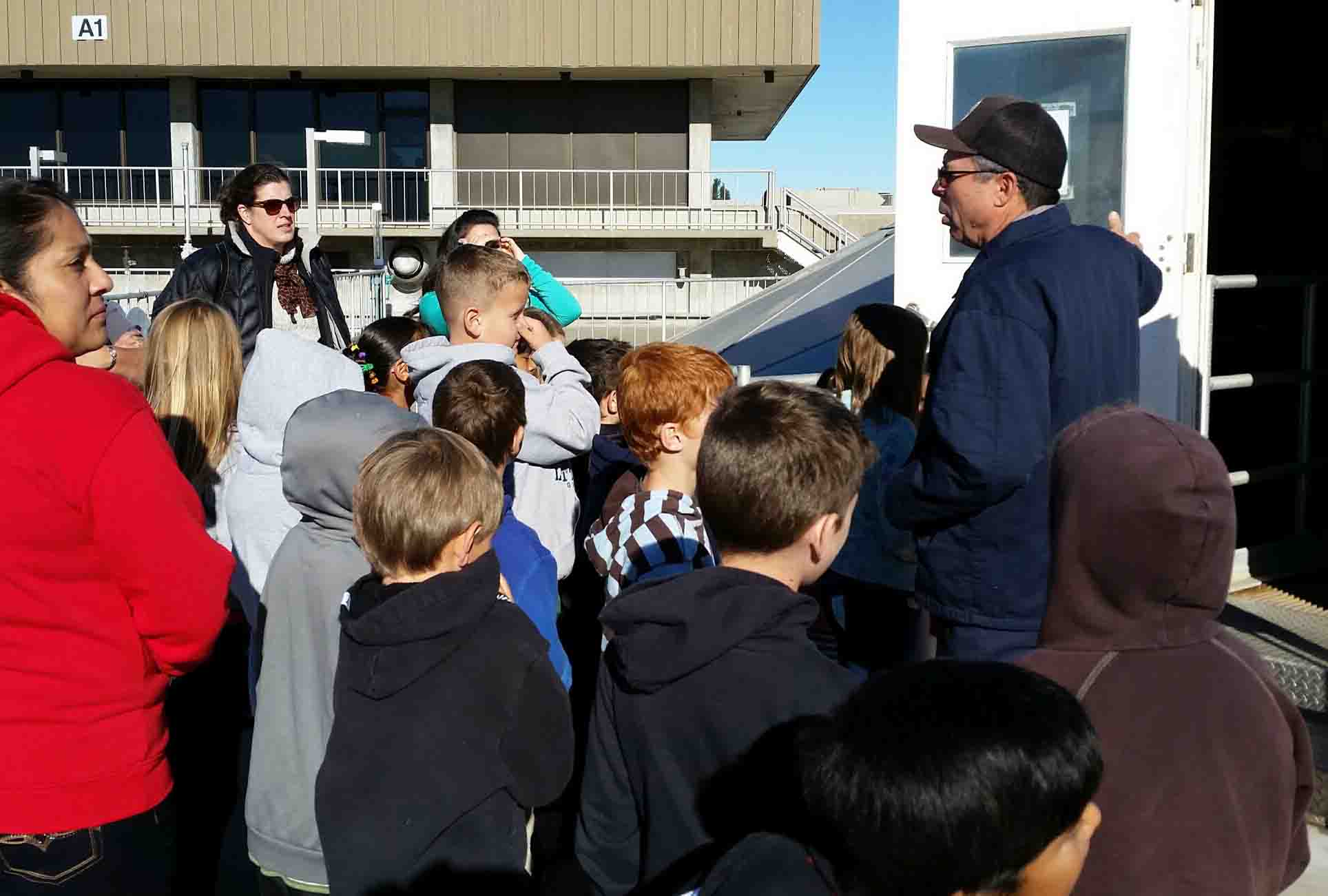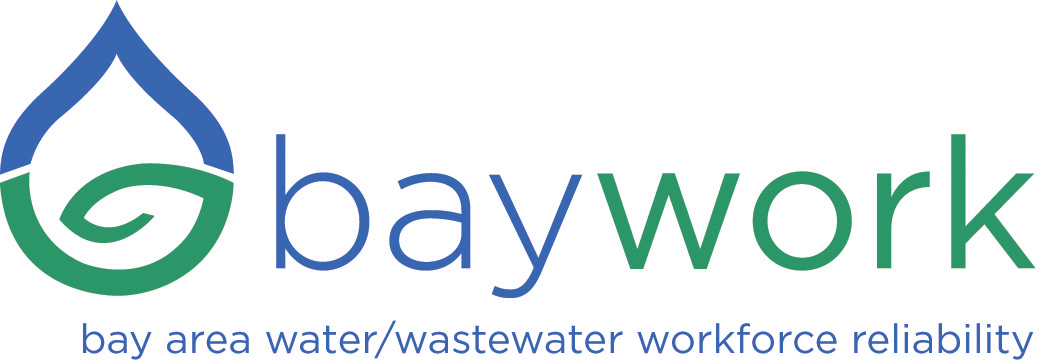Contextualized Learning
How-To Guidebook:
Helping Students Learn the Skills Industry Needs
Table of Contents
The purpose of this guidebook is to show industry staff how they can develop curriculum materials that will: (1) help make students aware of their industry and their jobs while (2) helping educators teach the skills needed to be successful in those jobs. While all materials in the guidebook were developed by the water/wastewater industry, many jobs essential in the water/wastewater industry (e.g., instrument technicians and machinists) are mission-critical in other industries as well. This publication is intended to provide encouragement, guidance, and very specific examples that can be used by any industry interested in helping students see the benefit of skills in math, science, and English.
Purpose of Guidebook
Instructional guide on How-To create Contextualized Learning Curriculum from a grant from Water Career Pathways.
Tue Rust with Los Medanos College discusses the purpose of the curriculum component of Contextualized Learning Modules.
This on-line guidebook is a companion document to Creating Relevant Contextualized Curriculum, published earlier by the Water Career Pathways Project. We hope that these guidebooks will help industry experts develop curriculum materials that will help bridge the disconnect between students and the world of work. Click on images to view.
Development of contextualized learning materials is one of the many ways that BAYWORK (a consortium of water/wastewater agencies collaborating in the area of workforce reliability) and the Career Pathways Project are working with educational partners to help students prepare for mission-critical jobs in the water/wastewater industry.
BAYWORK brochure
Classroom presentation
Career Fair 2017 flyer
Click image to view BAYWORK Video: Make a Difference
What are the learning objectives of the contextualized learning modules?
Contextualized learning modules have four objectives:
-
To make students and their teachers aware of the water industry as a desirable employer;
-
To make students and their teachers aware of skilled trades jobs that are interesting, valuable, and well-paid;
-
To make students and teachers aware of the skills needed in order to perform those jobs; and
-
To help students acquire the skills needed to be successful in career training for those jobs.
Click on images to view videos.
Jim Keller with Napa Sanitation District talks about why they wanted to participate
Cheryl Davis talks about BAYWORK's interest in creating Contextualized Learning projects
Lyle Hernandez with EBMUD talks about why he wanted to participate
Levi Fuller with DSRSD talks about why he wanted to participate
Jim Keller Napa San
There are many steps between high school and journey-level status (the ability of a worker to function reliably and independently in their trade), but that journey can’t begin until an individual has the foundational skills in math, science, and communication needed in order to learn the specifics of a skilled trade. It is ideal for students to learn these foundational skills during their junior high and high school years. Unfortunately, many students have limited information on how these skills could benefit them in the future.
Many students have little or no awareness of either the water industry or skilled trades work options; contextualized learning materials teach them about both. The purpose of contextualized learning materials is to provide curriculum that will help students learn those skills, while showing them how those skills may be of use to them in the future.
Click on image to view video.
In this video Danny Humrich and Charles V. Johnson with the San Francisco Public Utilities Commission talk about why it is important to learn math in school.
Why is the water industry investing in development of curriculum materials that will help students learn math, science, and communication skills?
Water/wastewater agencies know that their ability to protect their customers and the environment depends on the work of engineers as well as skilled trades workers such as water and wastewater treatment operators, electricians, instrument technicians, and machinists. Many of the knowledgeable staff who currently work in these positions are eligible for retirement, and will need to be replaced by workers from the younger generation.
Click on images below to view videos.
Kelvin Hatchett, Wastewater Collections Supervisor, West Valley Sanitation District
Josh Andrews, Electrician, East Bay Municipal Utility District
Luz Penilla, Engineer, Santa Clara Valley Water District
What are the components of these contextualized learning modules?
The basic components of a contextualized learning module are a brief video, curriculum, and candidate development videos.
The brief video (starring subject matter experts from a water or wastewater utility) illustrates a specific math, science, or communication skill needed in order to perform the tasks required of a journey-level skilled trades worker in a specific job category (e.g., water treatment operator or machinist).
Click on images to view videos.
"The Perfect Storm"
"The Great Shake"
"Under Pressure"
"The Air and Why We Should Care"
"Go With the Flow"
"Tiny Bubbles"
The curriculum package includes five components:
-
A Warm-Up Ticket,
-
A Worksheet for students,
-
A Cover Sheet,
-
A Solution Sheet, and
-
An Exit Ticket.
A Warm-Up Ticket includes the academic concepts that need to be assimilated by the students prior to solving the contextualized problem. Click on images to view videos and documents.
Levi Fuller with DSRSD talks about the Great Shake Warm Up Ticket.
Kathi Roisen with Laney College talks about the Under Pressure Warm Up Ticket.
Richard Moore with John O'Connell High School talks about the components of the curriculum in this video
A Worksheet is the handout about the problem that will be provided to students. In addition to the problem narrative and questions, it should include elements that help students understand the scenario associated with the problem such as illustrations and on-line links leading to the descriptions of the instruments and structures featured in the accompanying video. Click on images to view videos and worksheets.
Levi Fuller with Dublin San Ramon Services District talks about creating The Great Shake Worksheet
Kathi Roisen with Laney College talks about creating the Under Pressure Worksheet
A Cover Sheet consists of introductory material for teachers that explains the purpose of the curriculum, the background needed by students in order to use it, and how the curriculum fits with the core curriculum requirements of the State of California. Click on images to view.
Go With the Flow
The Perfect Storm
Under Pressure
The Great Shake
The Air and Why We Should Care
Tiny Bubbles
Kathi Roisen with Laney College explains the uses for the Cover Sheet for the Go With the Flow Module
The Solution Sheet provides the answers to the questions on the worksheet.
Click on image to view.
Under Pressure
Go With The Flow
The Air and Why We Should Care
The Great Shake
The Perfect Storm
Tiny Bubbles
An Exit Ticket consists of a few questions to help determine the students’ perceptions on the learning acquired through solving the contextualized problem, as well as its difficulty and most challenging aspects. Click on images to view.
Kathi Roisen with Laney College talks about the Exit Ticket for the Go With the Flow module
Go With The Flow
The Air and Why We Should Care
Under Pressure
The Great Shake
Tiny Bubbles
The Perfect Storm
-
A vocabulary list to help students understand terms associated with the problem (e.g., volume or rate of flow);
-
A homework assignment that involves use of the BAYWORK website at http:/bayworkorg, to expand the students’ knowledge of the water/wastewater industry and the skills required by skilled trades work;
-
A homework assignment in a complementary area (e.g., a writing assignment that relates to a math problem, or information provided on the BAYWORK website);
-
Learning activities that can be used when students tour a facility where the skills being taught by the curriculum are being used by utility staff in their work; and
-
Videos of subject matter experts telling interesting anecdotes about real-life situations where the skills covered by the curriculum was needed in order to address a problem.
Different working groups find innovative ways to refine and expand the contextualized learning template to meet student needs.
Addition curriculum components can also be developed to make modules more effective and engaging for students. Examples are below:
Click on image to view Vocabulary Rating Sheet for The Air and Why We Should Care module.
Feedback from students is extremely important, so that industry can upgrade existing contextualized learning modules and take student preferences into account when developing new ones.
Click on image to view
These forms should be gathered and forwarded to BAYWORK so that this input can be used to modify the curriculum and/or taken into account in development of future materials developed to help students learn core skills.
Feedback Form for Students
Feedback from teachers who have used either a portion of or a complete contextualized learning module is also extremely valuable. The Instructor Feedback Form allows instructors to identify what has worked well in the classroom, as well as components that need improvement.
Click on images to view.
Feedback Form for Teachers
Once completed, these forms should also be forwarded to BAYWORK so that input can be used to improve both existing and future contextualized learning modules.
Roles and Responsibilities
Director - Over-sees project from start to end
Actors - Water and Wastewater agency staff members
Producer - A lead person at the water/wastewater agency who helps organize and facilitate the work of the subject matter team
A number of different skill sets are required to produce a contextualized learning module. Before embarking on development of this type of curriculum should be certain that they have identified or feel confident of their ability to find individuals who are able and willing to fill key roles. Specific subject matter experts can be added to or subtracted from the development process, but it is essential to have a director who will coordinate all activities, a producer who will coordinate work with the subject matter experts, an instructional designer, and a trained videographer. In some cases, a single individual may perform more than one role. Click on image to view.
Sue Tensfeldt with the San Francisco Public Utilities Commission talks about being a producer.
Script-writer - Works with actors and director to create a script, including creating storyboard
Instructional Designer - Teacher or educator who creates the math-science-English-chemistry problem that the script dramatizes. Creates all aspects of the class lesson including worksheet, coversheet, exit ticket, and answer sheet.
Videographer - Films video
Editor - Edits video
Click on images to view videos.
Richard Moore with John O'Connell High School talks about instructional design.
Kory Loucks-Powell with BAYWORK talks about videography and editing.
"Under Pressure" - EBMUD & Laney College
"The Great Shake" - Napa Sanitation District & Solano College
Project kick-off meetings typically include the following;
-
An explanation of the purpose of the contextualized learning modules (support for instructors in teaching the skills students need to acquire in order to be prepared for successful vocational training, and exposure to the water/wastewater industry and skilled trades jobs);
-
Demonstration of the components of existing contextualized learning modules (both to provide a template and to avoid developing curriculum that duplicates content that has already been covered by a different module);
-
Identification of the roles and responsibilities that will be played by key team members; and a discussion of the process used to create the modules.
Often the kick-off meeting includes some brainstorming on math, science, or communication skills that (1) are needed for successful performance of the work and (2) are part of the existing educational objectives of a junior high, high school, or community college program.
The sequencing of each project is affected by the specifics of each situation. For example, the kick-off meeting for the initial contextualized learning module created by BAYWORK and the Water Careers Pathway Project, called “The Perfect Storm” was a 5-hour session that included both of the subject matter experts who starred in the film, the instructional designer who created the curriculum, the director of the project, a career technical training instructor who had helped train the two subject matter experts, additional staff from the community college that was supporting the project, and staff support from BAYWORK. Click on image on right to view video.
Grant Gilley with East Bay Municipal Utility District talks about the challenges of the collaboration process
Photo of the 5-hour work session for the Perfect Storm at Los Medanos College
The first module produced by Napa Sanitation District (“The Great Shake”) began with a kick-off meetings that included all key team players, including a representative from the Career Pathways Project. Additional actors were brought into the team at a later stage in the project.
Brain-storming may result in a list of several possible curriculum alternatives, all of which should be documented for possible future use. For example, planning for ‘The Great Shake” included consideration of several questions used by community college instructors to evaluate the math-readiness of students interested in career training in wastewater treatment. One of these math problems was used in the first module produced by Napa San, and another was used in their next module (‘Tiny Bubbles”).
When the same core team began work on the second module, the subject matter experts were able to jump-start the process by writing a draft script for one of the math questions that had been selected during the planning process for the first module. Versions of the script were reviewed by core team members via e-mail. By the time of the kick-off meeting for the second module, the group was already working on Draft 3 of the script. Prior experience with the process resulted in a level of confidence that led to more ambitious dramatic effects in the second module.
Napa San "Tiny Bubbles" kick-off meeting photo
The kick-off process for the second module produced by the San Francisco Public Utilities Commission followed a different pattern. One kick-off meeting was held with subject matter experts (which included a director and producer with prior experience developing modules) and a second kick-off meeting was held with the instructional designers (which also included the director). Subsequently the teachers visited the machinists' work site to get a better understanding of their work.
Variations in the format of kick-off meetings and brainstorming sessions can be accommodated when they are facilitated by a director with an understanding of the purpose, desired products, and the process.
San Francisco Public Utilities Commission's future Contextualized Learning Project. Teachers speak with SME about machinist on worksite.
Script Styles
Video scripts for contextualized learning modules can be dramatic, comic, or done in a more serious documentary style. Different project teams are drawn to different styles of presentation, and it is important for subject matter experts (who are often inexperienced as actors) to be involved in a style of production that feels comfortable to them. While the technical quality of a Hollywood block-buster is not a realistic goal, it is within the power of subject matter experts working in collaboration with instructional designers to create videos that reflect not only the skills required to perform the work but also a genuine desire to help students learn the skills they need.
Dramatic Video
Comic Video
Documentary Style Video
"The Air and Why We Should Care"
"Under Pressure"
"The Perfect Storm"
The Script
For each module, a draft script is created and circulated. The Subject Matter Experts, curriculum specialist, and others involved in the project weigh in on the story and refine and edit the script.
Click on images to view.
""Go with the Flow"
"Under Pressure"
"The Great Shake"
Jim Smith
East Bay Municipal District
Walk-Through of Location
Before the script is finalized, team members should do a physical walk-through of planned filming locations. These should be assessed in terms of the light available, the amount of unrelated foot traffic that could interrupt filming, and the noise in that location. A walk-through may alert the team that special equipment (e.g., special microphones) may be necessary in order to get good footage in certain locations.
Storyboards
It is very useful to prepare a storyboard of the script that shows the location where different lines will be performed, and the individuals who will be acting in each scene. The original storyboard usually follows the order of the script. However, the logistics of filming often make it more convenient to shot scenes out of order (e.g., to shoot all of the scenes that occur in one location at the same time). For the day of filming, a storyboard that has been reconfigured in the order that scenes will be shot is very helpful.
Click images to view.
Jim Keller with Napa Sanitation District talks about the storyboard process for the Great Shake Module
Jim Smith with East Bay Municipal Utility District talks about the storyboard process for the Under Pressure module.
Call Sheet
The goal is to shoot all scenes in one day. Having a call sheet for more complicated productions allows for the actors to participate only when needed. Click on images to view.
In this video, Kory Loucks-Powell with BAYWORK talks about the usefulness of Call Sheets
Since the problem illustration videos are generally brief, subject matter experts often under-estimate the difficulty of remembering lines in front of a camera. Every effort should be made to encourage subject matter experts to rehearse their lines prior to filming. A dress rehearsal that is staged at different locations prior to the day of filming provides another opportunity for actors to practice and sometimes fine-tune their lines.
Large, clearly readable cue cards that reflect every line in the final script are invaluable on the day of filming. Actors may improvise some with the script, but will not get totally lost and discouraged if cue cards provide a back-up. Click on image on right to view Napa Sanitation cue cards.
Photo of SFPUC cue card
Napa Sanitation cue cards link
Cue Cards and Dress Rehearsals
Videos of Subject Matter Experts
Individual videos are made of any subject matter experts who (1) participate in the problem illustration video and (2) perform key technical jobs in the water/wastewater industry. For example, one film produced at Napa Sanitation District included water quality technicians from their agency, as well as wastewater treatment operators and wastewater treatment operators from Dublin San Ramon Services District. Candidate development videos were done on all of these actors. The purpose of these videos is to give students and teachers more information on the responsibilities and skills associated with each job category along with personal accounts of the career path of each individual interviewed. The full set of questions used in each interview is shown. Click images to view.
Jim Keller with Napa Sanitation District talks about the Subject Matter Expert videos
The Mission Critical Survey Questionnaire
Each video is edited to highlight the most effective portions of the interview. Click on images to view.
The Perfect Storm - Grant Gilley East Bay Municipal Utility District
The Perfect Storm - Boris Noss East Bay Municipal District
The Great Shake - Tara McClinton, Napa Sanitation District
Go with the Flow - Andrew Kwan, EBMUD
The Great Shake - Sinzee Tran
Dublin San Ramon Services District
The Great Shake - Levi Fuller - Dublin San Ramon Services District
The Great Shake - Andrew Jellisaon, Napa Sanitation District
The Air & Why We Should Care - Lolita Wilkins San Francisco Public Utilities Commission
The Great Shake - Steven Chavis Napa Sanitation District
The Air & Why We Should Care - Steven Ardry San Francisco Public Utilities Commission
The Air & Why We Should Care - Charles V. Johnson San Francisco Public Utilities Commission
Each video is then edited to highlight the most effective portions of the interview. In the case of bi-lingual subject matter experts, the interview is sometimes done in English and Spanish. Click on images to view.
The Great Shake - Rodrigo Montanez, Napa Sanitation District (English)
The Great Shake - Rodrigo Montanez, Napa Sanitation District (Spanish)
Go with the Flow - Maria Rodriguez, EBMUD (English)
Go with the Flow - Maria Rodriguez, EBMUD (Spanish)
The Great Shake - Gabe Snook, Napa Sanitation District (English)
The Great Shake - Gabe Snook, Napa Sanitation District (Spanish)
In selecting actors, diversity of sex and ethnic background is important. We want students to know that the water/wastewater utility is ready to welcome persons of any background who are prepared to do reliable work. Click on left image to view video.
Charles V. Johnson with the San Francisco Public Utilities Commission talks about how the videos encourage diversity in the workplace.
Videography
It is essential to use an experienced videographer with good equipment. You may choose to include a second, less experienced videographer in order to get shots from multiple angles or in order to provide an inexperienced videographer with more training. However, the cost of staff time associated with preparing and shooting videos is too expensive to risk a video shoot that results in an unusable product.
Classroom Implementation
During the course of developing contextualized learning modules, discussion should include brain-storming on how to encourage their use in the classrooms of high schools, community colleges, regional occupational training programs, and other educational venues in the community. The subject matter experts who care enough about helping students to invest their time and energy in this type of project can often identify possibilities for putting the modules into use. For example, facility tours by students might provide access to teachers who might be interested in using the modules in their classrooms.
Photo of students touring Zone 7
Students from John O'Connell High School tour the SFPUC
Photo of students touring Napa Sanitation District
Next Steps
We have tried in this Guidebook to be as accurate and thorough as possible in describing the approach BAYWORK and the Career Pathways Project have used to create contextualized learning modules to help students acquire math, science, and communication skills. These products reflect a serious attempt by industry to help school systems help students move toward valuable careers that require these skills.
Sue Tensfeldt with the San Francisco Public Utilities Commission talks about future projects
Our goal in documenting this relatively new venture is to encourage other utilities and other industries to help educational institutions that lack sufficient resources to ensure that all their students reach key educational objectives.
Co-creation of contextualized curriculum requires both teachers and industry staff to stretch beyond their historical practices and capacities.
Click on image to view.
Cheryl Davis, past BAYWORK Chair, talks about the process in this video
Planned next steps include the following:
-
Testing existing modules and gathering feedback from both teachers and students, so that we can upgrade current modules where feasible and take their feed-back into account when we develop new ones;
-
Providing consultation and support to teachers on how to use the contextualized learning curriculum;
-
Encouraging other industries that employ skilled trades workers to considering investing in helping students learn the skills they will need in order to be successful in career training in the trades; and
-
Investigating other modes of curriculum support (e.g., a combination of classroom education and on-site learning exercises built around student tours to water/wastewater facilities).
How to Contact BAYWORK for More Information:
To learn more about how to create contextualized learning modules, please contact BAYWORK staff. Information about BAYWORK representatives is available in the About Us section of the BAYWORK website at http://baywork.org.
Water/wastewater utilities are committed to continuing to provide clean water and protect the environment, and instructors are committed to teaching essential skills. Our hope is to build on this partnership for the sake of our water, our economy, and our youth.


